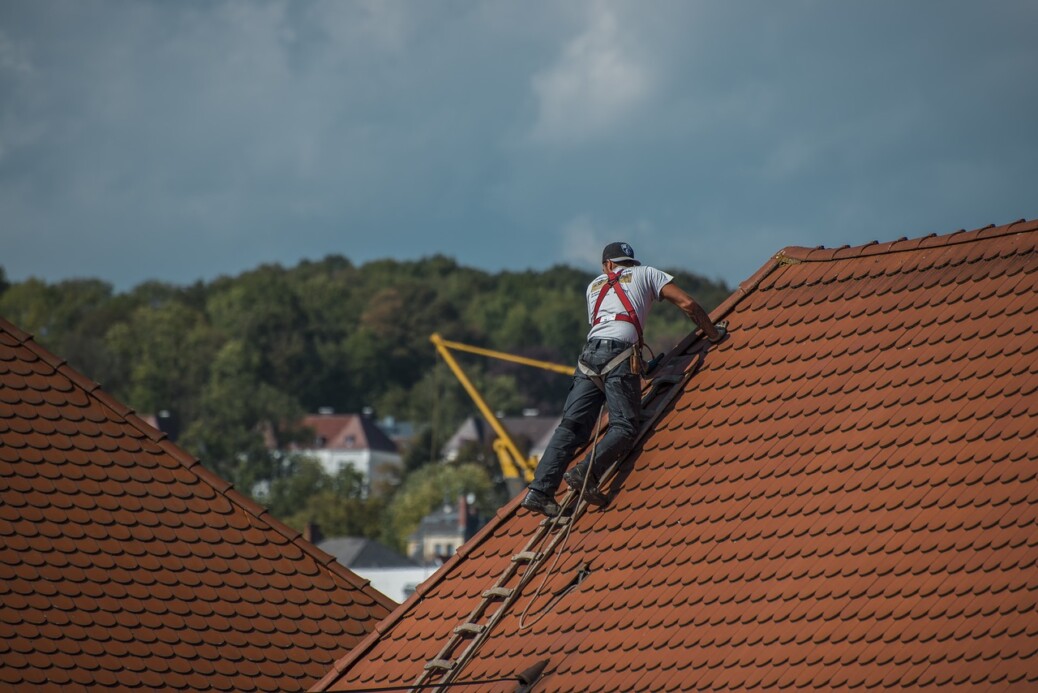As someone who owns a home, maintaining your house and being sure it remains up to code at all times is one of your more important responsibilities. As with most life investments, all properties require maintenance as years go by to ensure maximum comfort and safety. If you’ve lived in your home for a decade or more, there’s a strong chance you have considered investing in a roof replacement. Before jumping to the decision to install a new roof, there are some obvious signs to look for to figure out whether or not the time is right for you and your house.
Right off the bat, on your undertaking to understand roofing, you’ve probably come across the “25-30 year rule” for the longevity of most roofing systems. That figure is used as a benchmark. The majority of residential roofs need a replacement during that timeframe. However, there are many variables to consider, and all roofs are unique.
Roofing systems take a substantial amount of external wear and tear throughout each passing year. Direct sunlight, strong winds, tree damage, wildlife, tropical storms, large amounts of rain, or dangerous weather conditions – all of these have an impact on a roof’s lifespan. How quickly your roof needs to be replaced depends on several factors:
What kind of weather is experienced.
Proper maintenance and preservation.
Age of the materials.
How good the roofing materials used are.
How well it was installed in the first place.
Upkeep with minor repairs.
If wildlife was kept away.
External debris builds up.
Your Roof Is Over 20 Years Old
One of the first things to consider prior to inspecting your roof for cracks, breaks, and other problems is its age. A roof that is 25 to 30 years or older may require a total reroof, even if the roof itself appears in quality shape from the naked eye. Older roofs were many times created with materials that are no longer useful or considered strong today. If your roof is closing in on 20 years old, it might be time for a thorough inspection and potentially investing in an entirely new roof altogether, particularly if your roof has overlayed a previous roof installation.
Begin By Inspecting Your Roof From the Inside Out
Prior to jumping to conclusions about needing a new roof, start with conducting your own research at home by inspecting your roof’s condition from the inside out. Bring a flashlight with you to your attic or to the area in your home where the interior of your roof is clearly visible and look for the following indicators to a more serious issue:
Beams of Light: Light beams are common in roofs that need replacements or repairs. To really scope out the situation, check your roof’s interior during the day to catch and identify any light beams.
Leaks: Examine the attic for drips and potential water damage. Anytime a roof gets a leak, other areas of your house and its foundation are at elevated risk, particularly if you do not address the roofing problem as quickly as possible. Very damp areas can lead to further decay and mold growth that can contribute to breathing and other health ailments.
Streaks and Stains: Take note of all of the interior of your attic and try to pinpoint potential spots, stains, and streaks. Examine any discolored area of your roof for further information on its cause and potential leak culprit. Stains and streaks located in the interior of your attic are red flags to a bigger and more severe problem revolving around your roof’s durability.
Look For Shingle Issues
The issue with most roofs is that they’re overlooked and out of sight. Most of the time, not taking a good look until there is a stain or dark spot viewable from the street or yard.
Weathered or worn asphalt shingles are quite simple to spot if you search for them. Missing shingles may be replaced individually, but it’s typically a sign of the bigger issue. Large swaths of broken or loose shingles (or ones that are clearly crumbling) indicate that your roof needs a replacement.
Shingles can curl in two ways – cupping when the edges turn upward, or the second way shingles curl called clawing when edges stay flat, and the middle starts popping up. Both of these situations could mean that:
Moisture has built up beneath the asphalt because of inadequate ventilation in the attic.
Shingles were inadequately installed.
Old age and wear from direct sunlight and weathering
If your roof is at the point where you’re noticing large amounts of asphalt granules in the gutters, then there’s a strong chance you need a roof replacement.
Excessive Growths On Your Roof
Moss begins growing on roofs that don’t receive substantial sunlight, particularly in northern climates. Moss retains water against the surface, which can result in damage.
Noticing algae or other types of natural growth on top or out of your roof? If so, don’t worry. The natural world tends to grow over any man-made building in its path if it is not properly tended to and maintained.
When looking over your roof and the algae you have spotted, make sure to do so by inspecting both the inside and outside of your roof. While most plant growths are likely to be visible from the exterior of your roof, when there’s a bigger issue on-deck, nature could also be thriving on its own inside the attic, with you having zero clue.
Quite often, eliminating the algae from a roof is a way to fix the issue without further investments or repairs rapidly. However, if you see substantial growths on your roof or inside the property, it is highly advisable to find a roofer to determine the root cause and reason for the growths.
If the roof is just completely overgrown, then the only course of action would be to get a roof replacement; this usually happens to roofs unattended for long.
The good news is that algae growth and buildup are not usually signs that you must repair or replace your roof. Rather, algae are more of just an eyesore to your roof and one that is extremely common in humid geographic regions.
If the situation calls for a new roof installation, several decisions need to be made. Beginning with the roofing material to use, will you stick with asphalt or consider tile? Which Boca Raton roofing company to work with? Whether there’s a valid insurance damage claim? For many homeowners having the bank’s money to get a new roof may not be viable, there are financing options accessible for qualified homeowners offered by many roofing contractors. Be sure to do proper research before making your choice of contractor.


